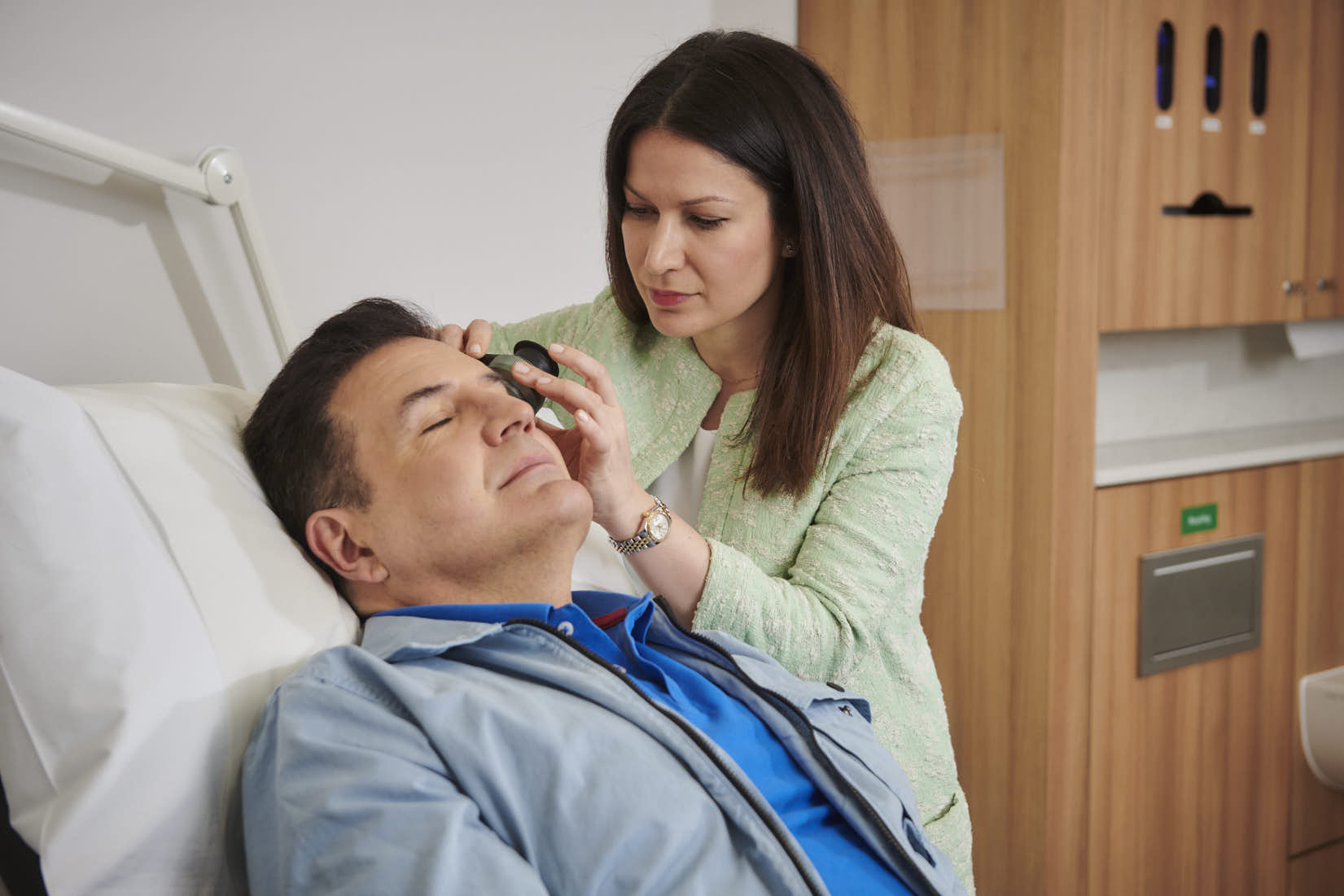
Dr Ellie Rashid
Specialist expertise: Paediatric Dermatology, Hidradenitis Suppurativa, Mole Checks, Acne, Rosacea, Eczema, Psoriasis, Pigmentation Disorders, Vitiligo, Melasma, Dermatology, General Dermatology, Biologics.
Dr Ellie Rashid discusses the different types of skin cancer - basal cell carcinoma, squamous cell carcinoma, and melanoma - causes, detection and symptoms.

Skin cancer is the most common and fastest rising cancer in the UK. Melanoma, although less common, is more serious, with around 17,500 cases diagnosed annually. That’s approximately 1 in 36 men and 1 in 47 women.
Understanding the differences between the main types of skin cancer is the first step in knowing what to look out for and when to act.
Melanoma starts in the pigment-producing cells in the skin and is more likely to spread if not treated early. It can appear as a new or changing mole and may be found on any part of the body, not just sun-exposed areas. Early detection is important, as melanoma can progress quickly.
Non-melanoma skin cancers include basal cell carcinoma (BCC) and squamous cell carcinoma (SCC). These start on the basal and squamous cells in the upper layer of skin respectively. These types are generally less aggressive and rarely spread to other parts of the body. However, they can still cause significant local damage if left untreated and may require surgical removal or other treatments.
BCC is the most common type of skin cancer in the UK. It often presents as a shiny bump, scab or ulcer that doesn’t heal. It grows very slowly and rarely spreads, but over time it can cause significant damage to surrounding skin and tissue if not managed appropriately. You’ll usually find BCCs on areas that have had a lot of sun exposure over the years, such as the face, ears and neck. People who spend a lot of time outdoors or have a history of sunburn are more likely to develop them.
Melanoma can occur on any area of the skin, even places that don’t see much sun, such as the back, scalp, or soles of the feet. It often looks like a mole that’s changed in size, shape or colour, or a mole that looks different from your other moles. Some types of melanoma grow quickly, so if you notice something new or changing, it’s important to get it checked promptly.
Although BCC and SCC are more common, melanoma is considered more serious due to its higher potential to spread. That said, if any type of skin cancer is diagnosed early and treated appropriately, outcomes are usually very good.
Around 90% of all skin cancers are preventable. One of the most effective ways to protect your skin is through consistent daily use of sunscreen and other sun-safe practices. This applies year round, not just when on holiday.
Sunburn is a clear sign of skin damage. The skin usually turns red within 2–6 hours of sun exposure, peaks between 8–24 hours, and can take several days to settle. Every episode of sunburn increases your lifetime risk of developing skin cancer.
Sunscreens fall into two main categories:
Chemical sunscreens usually have a thinner texture and are easier to apply. They need to be applied at least 20 minutes before sun exposure and can sometimes cause irritation.
Physical (mineral) sunscreens are often recommended for sensitive skin and typically contain zinc oxide or titanium dioxide.
Choose mineral-based sunscreens that are fragrance-free and hypoallergenic if you have sensitive skin. Look for added hydrating ingredients like hyaluronic acid or ceramides if you find them drying.
If you are oily or acne prone, look for lightweight, oil-free, non-comedogenic formulations. Mineral sunscreens can work well here too. A mattifying sunscreen can also help with shine throughout the day.
SPF 30 blocks about 97% of UVB rays. SPF 50 blocks around 98%. Higher SPFs can help compensate for under-application, which is common. SPF 30 or above is generally recommended. Children should use SPF 50 or above. Babies under 6 months should be kept out of direct sun altogether and protected with shade and UV-protective clothing
If you’ve noticed a new or changing mole or a lesion that won’t heal, it’s important to have it checked. At Welbeck, we offer consultant-led mole checks, mole mapping and expert skin cancer care. We have multi-disciplinary skin cancer meetings to provide optimal care for our patients.
Our Skin Health & Allergy Centre combines cutting-edge diagnostics with personalised care to ensure the best outcomes for every patient.
Dr Ellie Rashid consults on all aspects of dermatology including paediatric dermatology, hidradenitis suppurativa, mole checks, acne, rosacea, eczema, psoriasis, pigmentation disorders, vitiligo and melasma. She is joint training program director for specialist dermatology training in London.